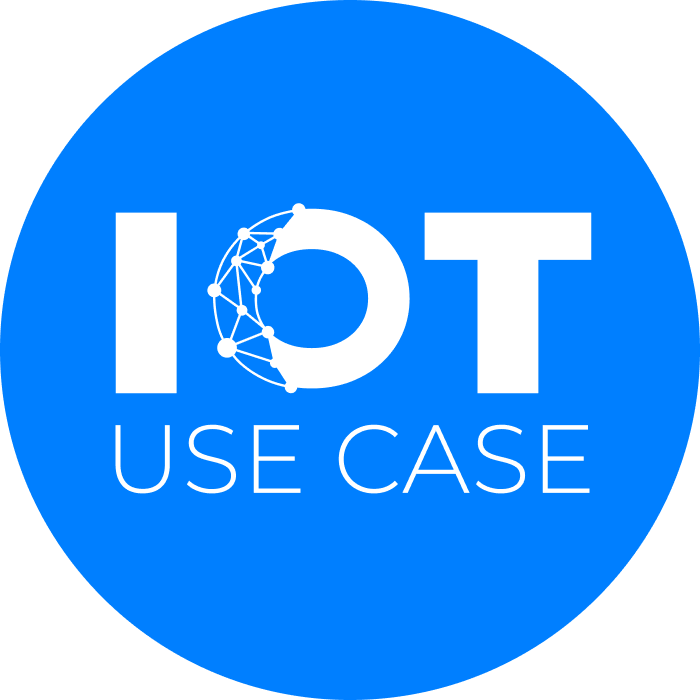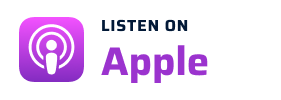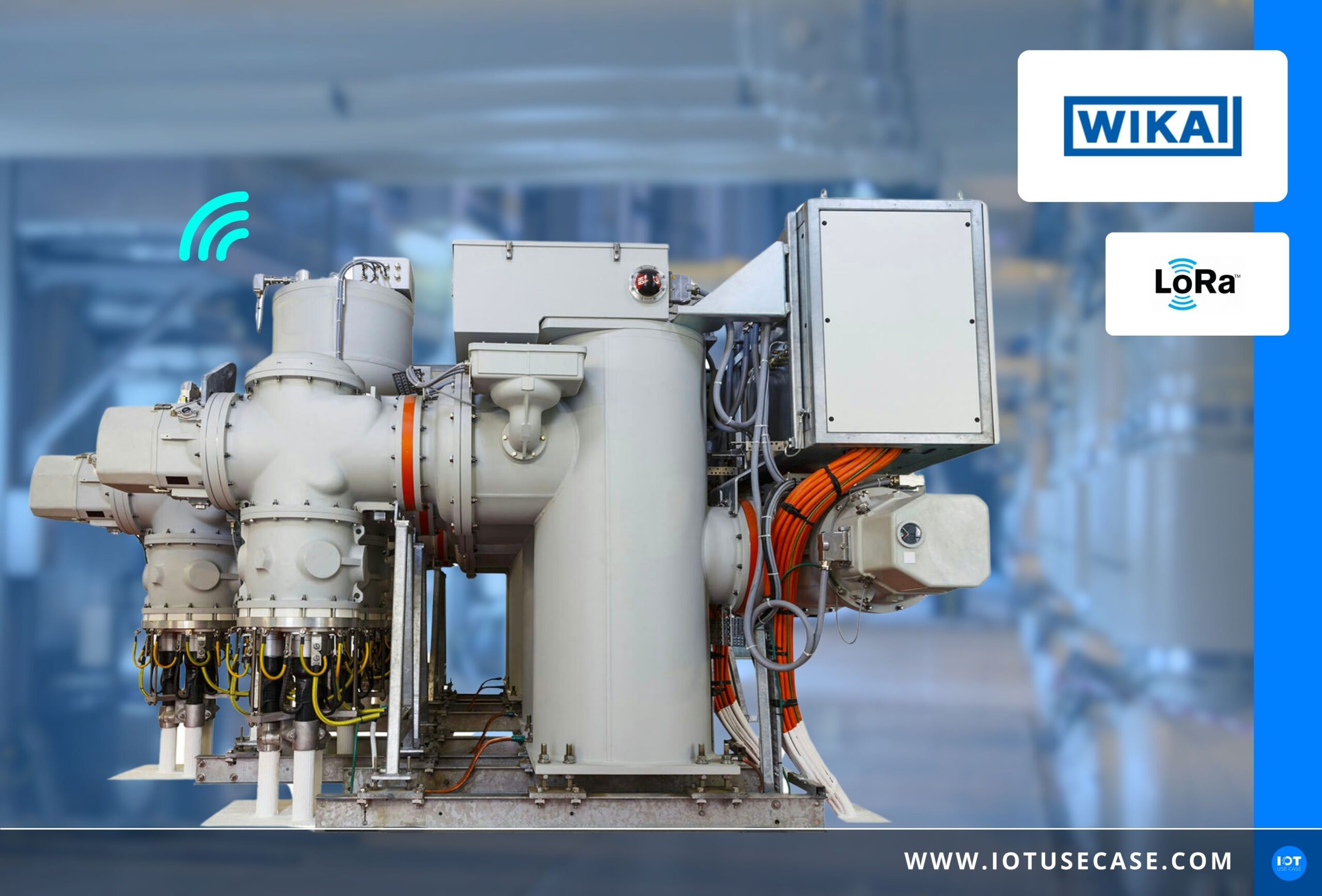From traditional measurement technology manufacturer to provider of holistic IIoT solutions: WIKA shows us how it’s done in episode 126! Represented by Philipp Lausberger (IIoT Application Specialist, WIKA), we welcome WIKA – a global leader in pressure, temperature, level, force and flow measurement technology as well as calibration – to the IoT Use Case Podcast with Ing. Madeleine Mickeleit.
Episode 126 at a glance (and click):
- [07:06] Challenges, potentials and status quo – This is what the use case looks like in practice
- [14:19] Solutions, offerings and services – A look at the technologies used
Podcast episode summary
WIKA, with over 75 years of experience and 11,000 employees, produces more than 50 million measurement points annually, underscoring their expertise and customer trust in their measurement technology. Philipp Lausberger emphasizes that WIKA’s solutions are used across all sectors, from energy technology to the process industry. Its broad customer base ranges from small businesses to global corporations. WIKA develops individual solutions ranging from sensor installations to data transmission, offering more than just hardware, but valuable, data-based solutions for various areas of application.
Megatrends such as decarbonization, demographic change and digitalization are driving WIKA’s strategic direction. In this episode, use cases and application areas such as specific IoT solutions, e.g. tank telemetry and energy optimization, are presented.
One focus of this episode is the monitoring of gas-insulated switchgear. Philipp Lausberger talks about a use case that emphasizes predictive maintenance and plant safety by monitoring SF6-filled switchgear.
We are also talking about:
- Technological foundations and challenges: Technical aspects of IoT solutions, including sensor technology, connectivity and data analysis
- Integration and customer requirements: Customization of IIoT solutions to specific customer needs and challenges of integration into existing plants
- Data acquisition and processing: Various technologies and methods for data acquisition and transmission as well as their integration into analysis and prediction models
At the end of the episode, there is an outlook on new solutions and technologies that WIKA is planning for the future. WIKA once again emphasizes the added value that IIoT solutions can bring to companies, especially in terms of increased efficiency, cost reduction and safety.
Podcast interview
Today I’m talking to WIKA, one of the world’s leading manufacturers of pressure, temperature, level, force and flow measurement technology, as well as calibration. I’ve been waiting for this episode for a long time, and today is finally the day. It’s truly special to have such an established, large company, with such a long history, appearing on my podcast. I think today there are unique insights here, also regarding IoT, that you might not get anywhere else. WIKA is increasingly developing into a holistic provider of IoT solutions. But what exactly are these IoT solutions? What use cases result from 50 million measuring points per year? What are WIKA’s vision and strategy? What partners does WIKA work with? Could you also be a suitable partner for WIKA? I’m answering these and a number of other questions today together with Philipp Lausberger. He is IIoT Application Specialist at WIKA.
Hello, Philipp, welcome to the IoT Use Case Podcast. Glad to have you with us today. How are you doing and where are you right now?
Philipp
Hi, thanks for the invitation. I’m doing great. Yes, I’m standing here in our video and podcast studio at our headquarters in Klingenberg. To illustrate this a little: That’s about a 45-minute drive southwest of Frankfurt am Main.
Very nice. Our listeners can’t see it, but I notice a green background. Does that mean you also do video streaming at WIKA? What is it like on site?
Philipp
That’s right, we opened the studio last year as part of our 75th company anniversary here at the Innovation Center. We do all sorts of things. We produce internal podcasts and internal training videos, and we also sometimes have live broadcasts with panel discussions involving our customers. It’s extremely well received and definitely a lot of fun to see how everything continues to evolve here.
Certainly, maybe we’ll even shoot a video on-site at your place sometime. I already mentioned in my intro that you are known as a leading manufacturer. What our listeners and I are particularly interested in is WIKA’s role in comparison to holistic providers of IIoT solutions. Could you tell us a bit about what is happening in your market and why there is this shift towards IoT?
Philipp
Exactly, so we started in the classic way 75 years ago with mechanical pressure and temperature measurement technology. Today, we count over 11,000 employees, and as mentioned in the intro, we create over 50 million measurement points per year. So we have been working in the area where data is created for a long time. We are currently observing three major megatrends: decarbonization, demographic change and digitalization as the long lever behind these trends. This is precisely why we have been involved in the Industrial Internet of Things for many years now and are a founding member of the mioty alliance, among others, but of course we are also driving forward pioneering technologies such as LoRaWAN or OPC UA.
Great, yes. I think you have a lot of partners that you work with and the mioty alliance is probably one of many that you work with there, you’re a founding member, but you also work with a lot of other partners.
Philipp
Yes, exactly, we are gradually expanding our range because cohesion is essential today. Situations are becoming increasingly challenging, and this is where IoT comes in. We are in the IoT Use Case network here and that’s how it works in the industry now. Without networking it becomes difficult.
Yes, definitely. Perhaps one more question so that I can classify it. We have already talked twice about 50 million measuring points. Could you explain once again what exactly you mean by a measuring point? You produce the hardware, but use the term measuring point. Is there a specific definition for this?
Philipp
Exactly. These are primarily sensors, but they differ depending on the category. We still use traditional mechanical measuring devices, but also sensors and a wide range of new technologies. This also includes smart devices that not only provide a measured value, but also have built-in intelligence. We therefore generalize this as measuring points.
This makes sense and certainly meets the interests of customers. They want to measure, calibrate and use the functions offered by the hardware. You are part of a special team at WIKA. Could you explain what your role as an IIoT Application Specialist entails and which customers you work with? In the IoT segment, new contacts are often added. Can you tell us something about this?
Philipp
Gladly. I am part of the engineering team and we analyze current challenges together with our customers. I am part of the engineering team and we analyze current challenges together with our customers. This includes setting up sensors and gateways, ensuring the secure transmission of data to the server, as well as the individual configuration of customer applications. My job as an Application Specialist is to understand our customers’ needs precisely, identify their pains and explore how we can create added value across the board with the data so that the entire value chain benefits and our customers can position themselves for the future.
So your customers come from different industries and sectors?
Philipp
Right. We are represented in almost all industries, from cooling and heating systems in energy technology to the complex process industry, including the chemical, food and pharmaceutical industries. Our customers range from small businesses to globally operating corporations, and accordingly, the challenges are individual. To be successful, it is important to understand them.
[07:06] Challenges, potentials and status quo – This is what the use case looks like in practice
It is particularly important to address the problems or challenges together with the customer. In this podcast, we mainly discuss practical use cases that are tangible. Could you tell us about some use cases you address, maybe provide insight into one or two projects? So we have some practical examples for today’s discussion.
Philipp
Yes, we have carried out numerous installations and projects in various areas. An example is tank telemetry, the remote monitoring of liquefied gas and diesel tanks, where we excel in traditional supply chain optimization. Then, a huge topic, again aimed towards decarbonization, is energy optimization, by creating more transparency through additional measurement points, such as pressure and temperature, to optimize the system. A very important topic is, of course, maintenance and documentation automation in general, simply through remote monitoring.
Could we perhaps pick out a specific example, for example in the area of diesel tanks, energy optimization or service, maintenance and documentation? Do you have a specific example to help us understand which of your products are used?
Philipp
Yes, I have a very interesting use case with me that shows the range of our complete solutions. It is about the protection of systems, especially the monitoring and forecasting of gas-insulated switchgear.
Just to clarify: What exactly is a gas-insulated switchgear?
Philipp
Gas-insulated switchgear can be found in the high and medium voltage range and wherever high voltages have to be switched, i.e. in power stations, in urban areas and in industrial operations, including in compact form in wind turbines. As the name gas-insulated suggests, these switchgears are flooded with a gas to prevent arcing and wear. The advantage over air insulation is the higher dielectric strength, which enables very compact designs.
Which of your products are used here? Are these mainly measuring devices?
Philipp
Yes, we basically supply the sensors used to analyze the filled gas. This means that it contains a so-called sulphur hexafluoride, the SF6 gas, and we monitor this gas by measuring pressure, temperature, density and humidity in order to record all the relevant parameters and determine the condition of the system and assess the quality and usability of the gas.
You have already mentioned the added value that you provide and your slogan “From measured value to added value”. Let’s talk about this for a moment. What is the added value for the customer in such a case? What analyses or forecasts do you do in a case like this?
Philipp
Although SF6 gas also has very good technical properties, i.e. it prevents arcing, it is unfortunately also a very potent greenhouse gas. One kilogram of SF6 is roughly equivalent to 23 tons of CO2. This already represents an initial added value: better understanding and maintenance of the systems can prevent gas leaks, which not only prevents fines due to environmental regulations, but also contributes to environmental protection. If we understand the system better, we can also carry out better maintenance and prevent the system from being damaged. Apart from that, what really adds value is that we are mapping the entire chain here. This means that we measure the parameters, calculate the system’s next maintenance cycle and can also carry out a service. This means that we also have equipment such as pumps, compressors or gas dehydration systems, but we also service the plant ourselves. Here we can book an all-round carefree package with WIKA, so to speak.
In other words, to summarize, these plants should ultimately not fail. It is necessary to avoid a certain susceptibility to errors in order to ensure reliability. You also offer maintenance and service and can prevent failures by measuring your sensors and probably also achieve a certain level of efficiency. The approach you are pursuing is to develop added value together with customers by moving from pure hardware delivery to a comprehensive service that supports efficiency and CO2 savings. Is that correct?
Philipp
Exactly, you’ve summarized that very well. Our main goal is to protect people and machines. An improperly maintained gas-insulated switchgear can lead to flying sparks that heat the gas and, in the worst case, cause the plant to explode, which can lead not only to power outages but also to greenhouse emissions. Perhaps also on the subject of the business case that we can really reduce maintenance cycles through condition monitoring, because I can always access the condition of my plant. Considering that a system is installed in a power plant, this often poses considerable challenges. In order to gain access at all, many protocols have to be filled out and numerous safety regulations have to be adhered to. Access to such a system involves a great deal of effort, which we can significantly reduce with our solutions.
Thanks for the example, it’s really valuable to get an insight into the practice. Even if many projects are confidential, concrete examples are very informative. Thank you very much for this. Ultimately, it’s about the added value for the customer, i.e. the business case. By optimizing maintenance cycles, you save time and money. And in critical applications, such as flying sparks, your monitoring ensures that no damage occurs – neither to the machine nor to people. In summary, the added value for the customer, where time and money can be saved, lies directly in the plant.
Philipp
Yes, absolutely. As already mentioned, the focus is mainly on reducing maintenance cycles and preventing downtimes.
[14:19] Solutions, offerings and services – A look at the technologies used
There are likely to be challenges for your customers when integrating new technologies into existing plants. What are the typical technological challenges that arise in such projects?
Philipp
Generally speaking, it is simply the integration of new technologies and also the maintenance of the infrastructure. You can see very clearly on the network page how many different use cases there are. Terms such as Internet of Things, Industry 4.0, digitalization and digital twin offer room for interpretation. Customers often ask: Which technology is suitable? How do I integrate them into my existing system? And how do I generate and transfer data securely? These are the main questions that we repeatedly encounter in the field.
In the solution section, we will go into detail about how to do this. You gave a general introduction to the technological challenges. Can you elaborate on the challenges your customers have to overcome when working with you? In particular, how do they integrate into existing systems and generate and transfer data?
Philipp
During installation for data generation, one can take an industrial park as an example, where the subsequent installation of a data point can cost anywhere from four to five digits. For example, it would make sense to consider a battery-operated solution that forwards data via radio, e.g. via LoRaWAN or mioty. Then you come to the question of infrastructure and maintenance. It is important to understand that we often see an archipelago of island or pilot projects with customers, where proprietary approaches are chosen or gateways are installed. In the long term, maintainability and scalability are often not sustainable. That is why we at WIKA attach great importance to network management. How do I integrate data? How do I forward them? Data protection is also an advantage in professional network management, as data is often encrypted automatically. It’s also about where the network management can be installed, whether in the cloud or, for higher requirements, on-premise.
You have just mentioned two very important key points. One is, of course, the installation, i.e. looking at how to get the data out of the hardware. You mentioned LoRaWAN, and I know that many of our listeners are already working with this technology. At the same time, the issue of scalability is very important. We have mentioned the 50 million measuring points. The vision would also be to connect them all at some point and it would be important to see how to integrate them and not always create isolated solutions. I would get straight into that, because you can now go down the path of developing the whole thing together. Can you give us a bit of an overview of what you offer? How do your IoT solutions work and what exactly do you offer? And then I would build on that and inquire a bit more about data acquisition, especially the integration and linking of data, and then the actual application behind it. But first, what is your offer here?
Philipp
Our offering, the complete IoT solution, consists of three independent layers. The first layer begins with the end user or the end system, the application mapping. This includes everything to do with monitoring, alarm management, predictive maintenance and integration into existing systems. The second layer concerns connectivity, i.e. how the data gets from the measuring point to the application. Here we take care of the installation of gateways and network management, supported by the company LORIOT, which offers hybrid network management for LoRaWAN and mioty. The huge advantage is that LORIOT is also part of the WIKA Group, so to speak, and so we can really offer a complete ecosystem here. The third layer is where the data is generated, where we have a broad portfolio of in-house measurement technology. But it’s also important not just to focus on what is standard, but as mentioned earlier, where we can provide the highest added value. We don’t just limit ourselves to standard products, but also integrate third-party devices to complete IoT solutions and continuously expand our portfolio. I have a little surprise at the end, if we have enough time.
Very nice, we’ll get to that in a moment. Thank you very much for the teaser. Let me summarize again: You offer the application or software in which the added value is created as a visualization. Then you provide connectivity with your partner network and take care of data acquisition, i.e. the connection to your sensors and others. This is a nice development, as many have installed different measurement technologies and it is good to see that you, as an open partner, offer long-term solutions that are not just limited to your own sensors, but can map an ecosystem. Let’s stay with data acquisition: how exactly does it work? For example, in the use case with SF6 gas, where pressure, temperature, density and humidity are relevant. You connect the sensors. How does that work?
Philipp
We have various options for the connection, depending on how the plants are distributed in the field. We have LoRaWAN sensors in our portfolio, but also collection points, i.e. edge gateways, to which several sensors can be connected in order to achieve a higher data rate than would be possible via LoRaWAN or mioty. A mobile radio-based solution is often useful for telemetry of tanks, especially if the measuring points are spread over long distances. We offer special solutions for complex systems that require a high sampling rate and a lot of data and where a power supply is available.
Thank you for the example with the diesel tank, that can be mapped for various use cases. Let’s stay with connectivity: the data may be pre-processed via a gateway and then transferred to the cloud or a server system. How do you handle that? You mentioned LoRaWAN. Perhaps we can stick with this example. How does that work with this technology?
Philipp
Exactly, the network server is the central point where devices are registered, i.e. both gateways and endpoints, the nodes. There, it is checked whether an endpoint is allowed to communicate with the gateway. The installation is relatively simple and a sensor can be integrated within five minutes. The network server automatically regulates encryption and offers interfaces to various systems and open protocols. This depends on the customer’s specifications. The data is sent from the sensors via LoRaWAN to the gateway, where a query is made as to whether communication is permitted. After decryption by the network management, the data is forwarded to the end point, the end system.
Okay, that means your devices will be registered accordingly. I think that’s what you meant by linking at the beginning, i.e. establishing a connection to a server. The devices can be integrated and installed in five minutes – nice KPI here. And the whole thing will probably also be scalable for different systems. You also mentioned integration, i.e. the possibility of connecting existing plants, which you would also do.
Philipp
Right. There are many customized systems on the market. We have our own platform that we can offer for support. But it is important to understand exactly what our customers need. It is not expedient to simply sell a complete solution from A to B. Instead, we integrate what is already there. There can also be a coexistence of systems, but the integration actually takes place in the network server.
Very nice. And the last step would then be the actual analysis, which you also mentioned earlier with the application. There, the actual business value is created in the maintenance and service area, for example, by reducing maintenance cycles that you can analyze. But other use cases can also be implemented. Data analysis is probably also a core part of your team in this application analysis where you look at the data, right?
Philipp
Yes, that is definitely the point where the real added value arises. There are different approaches, but to come back to the example with the gas analysis: It is important to understand the relevant parameters, such as density and humidity. Moisture can have physical effects on the plant, such as condensation inside the switchgear, depending on the outside temperature and time of year. These effects must be compensated for, and a mathematical, statistical model is selected that offers the best performance and stability for this application. Based on the data history, an expectation range is defined, which is also used for anomaly detection. If the process deviates from the target value, you know that something is wrong. We have packaged the entire thing for the gas analysis of switchgear in a docker-based solution. This means it is a package that can be integrated into any cloud. Data is retrieved via an API and the customer can access the data and forecasting or use a complete solution available on our platform. It is important to us that the solution is scalable and integrable. In this way, feedback can be integrated and the process adapted accordingly.
Perfect, exactly. So, for those who have never heard the term Docker, it basically refers to the use of a service that is provided in a kind of software container. Containers are standardized units for software development that enable access to certain libraries and simplify handling. We don’t want to get too technical today, but that’s just a rough classification. Cool, but that means you do the analysis that creates the added business value. This is a very good starting point for understanding how WIKA works. I’ve already seen it at trade fairs, but the fact that you take a holistic approach and work together with partners is particularly exciting. It enables use cases such as maintenance and service and deals specifically with issues such as fines that can occur in the event of SF6 gas leaks. You support customers with your expertise, including in areas such as diagnostics, compliance and documentation. The variety of use cases is very exciting. I still have many more questions, but this is a nice wrap-up for today. Many thanks from my side for this episode. A quick note: We will be at the Hannover Messe with IoT Use Case. If you’re listening to this episode before the show, mark April 23, Tuesday, at 5 PM for a big IoT Meet-up. Philipp, I don’t know if you’ll be there, but it would be great if we could do something together. Are you at the Hannover Messe?
Philipp
Yes, I’ve definitely planned it and would also be delighted to perhaps meet one or two listeners in person. Of course, we are also represented at the Hannover Messe. And briefly about the little surprise: we have our standard in the field of pressure and temperature measurement technology, but we also have a new system that we will be presenting at the Hannover Messe. It is about monitoring and anomaly detection of rotating machines, i.e. pumps and compressors with analysis. Everything is based on LoRaWAN, is battery-operated for areas with explosion-protection. Come and visit us at our booth and take a look at the system live. As I said, I would be delighted if we could meet some listeners there in person.
You are of course welcome to get in touch with Philipp. You are part of our network at IoT Use Case. But you also have LinkedIn. I’ll link your LinkedIn in the show notes. Many thanks from my side. I believe we could open up many more questions, but then gladly discuss them personally at the Hannover Messe or in direct exchange with you. Thank you very much for joining me today and for the practical examples. Maybe in a year’s time we’ll hear an update on what has happened. I pass the final word for today to you.
Philipp
Thank you very much, I would also be pleased to hear from you again. You can find the specific use case on the platform for reading. It was a very exciting experience for me today. I am looking forward to everything that is yet to come. Just message me and otherwise I’ll see you at the Hannover Messe. Take care!
Alright, thank you very much. Take care, have a nice week, bye!











